What's Inside the Sun? A Star Tour from the Inside Out
What's Inside Our Sun?
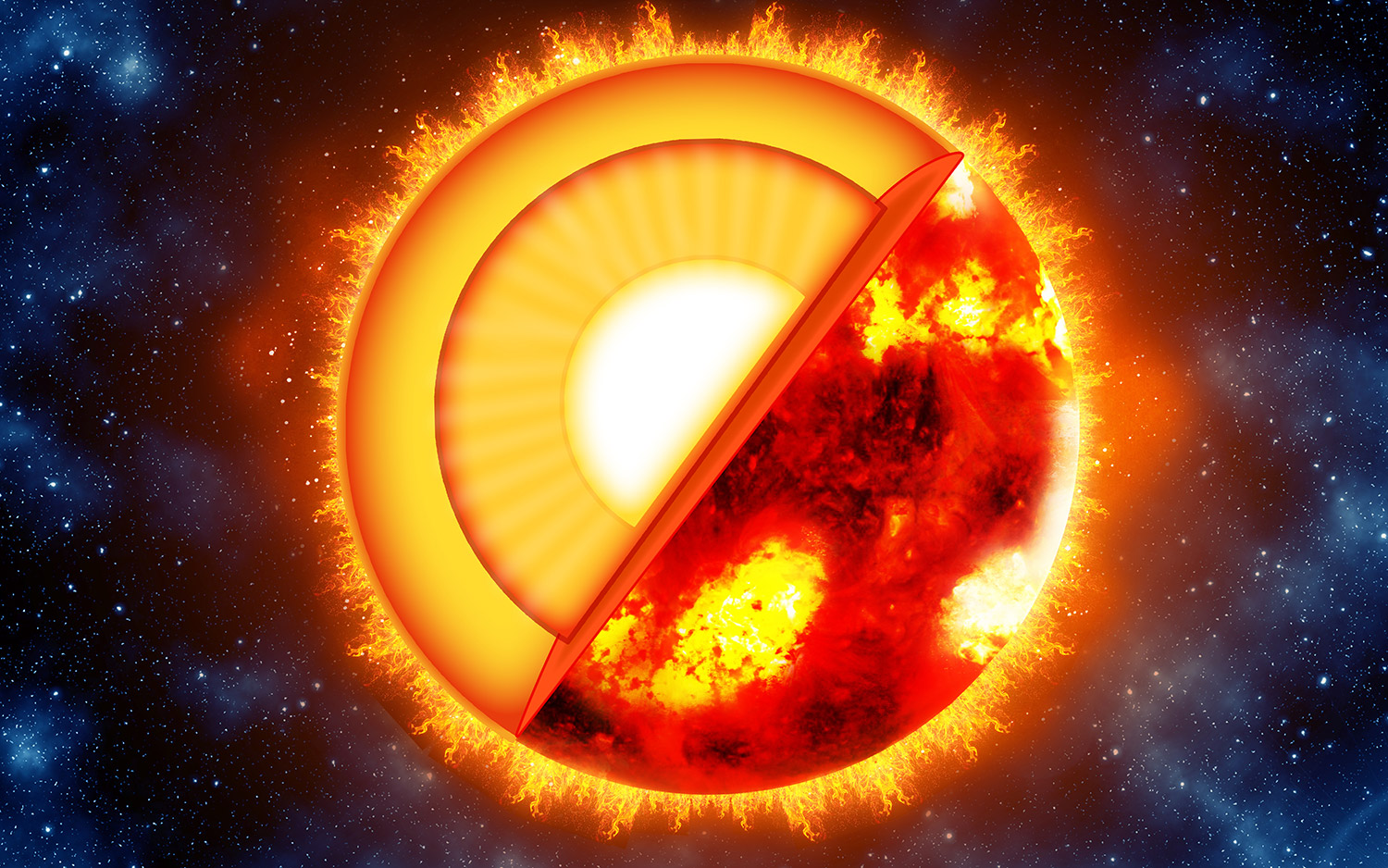
Our sun shapes every day of life on Earth and has for billions of years — but just because we're massively dependent on the star doesn't mean we know all its secrets. And those mysteries have still-broader implications, because our sun is just the easiest to study of the trillions of stars surrounding us. After decades of diligent science work, we at least know what's inside the sun, even if we don't always understand how it works. Here's what's contained in that glowing ball of gas we circle every year of our lives.
FIRST STOP: The Core
Core
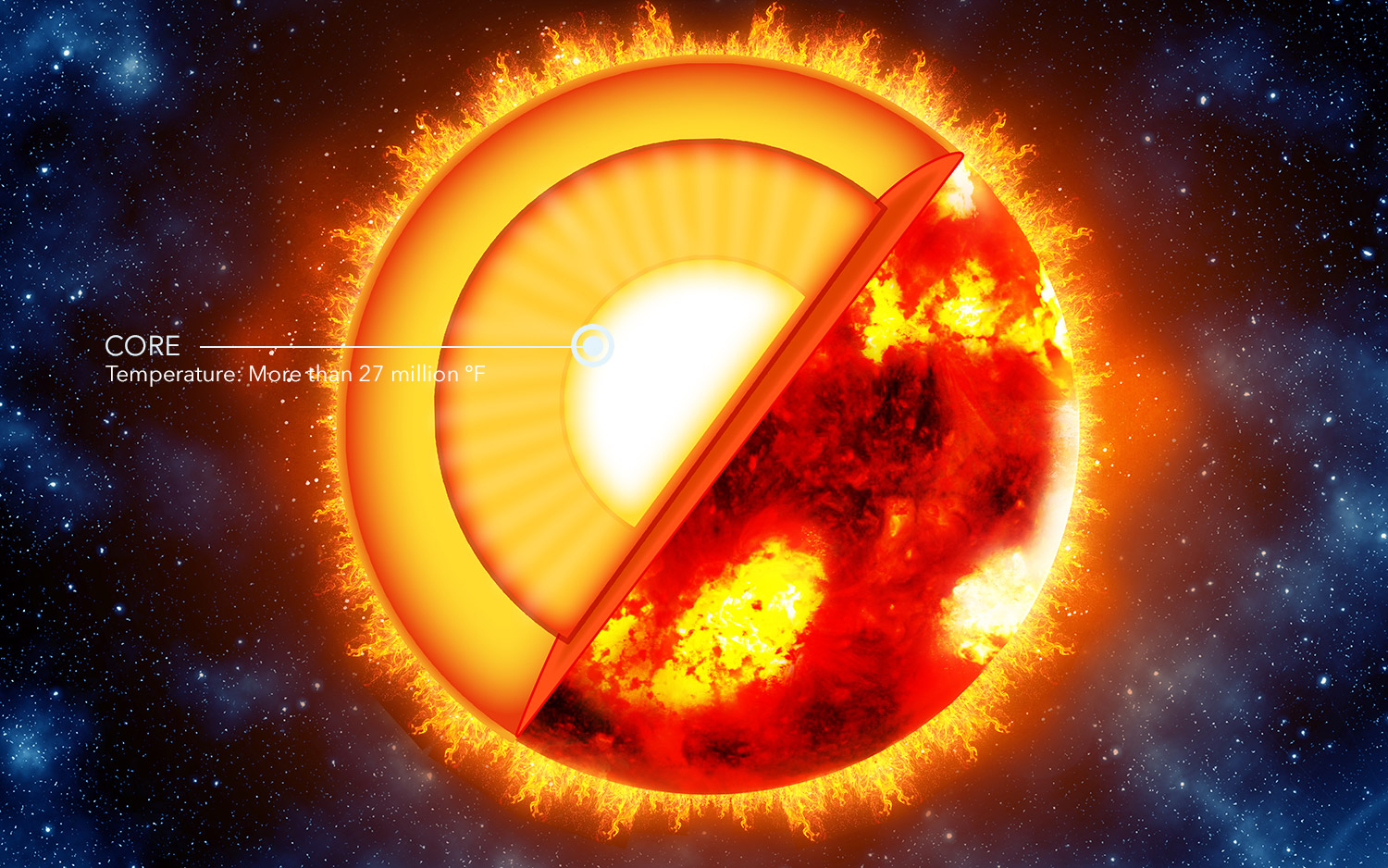
Deep in the heart of our sun is its core, which is where the fusion reactions that power our star take place. That means there's no adjective quite strong enough to describe just how hot and dense the core is, where temperatures reach over 27 million degrees Fahrenheit (15 million degrees Celsius) and material is packed together more than 10 times more densely than in lead. [Read more about fusion in the sun]
NEXT: The Radiative Zone
Radiative Zone
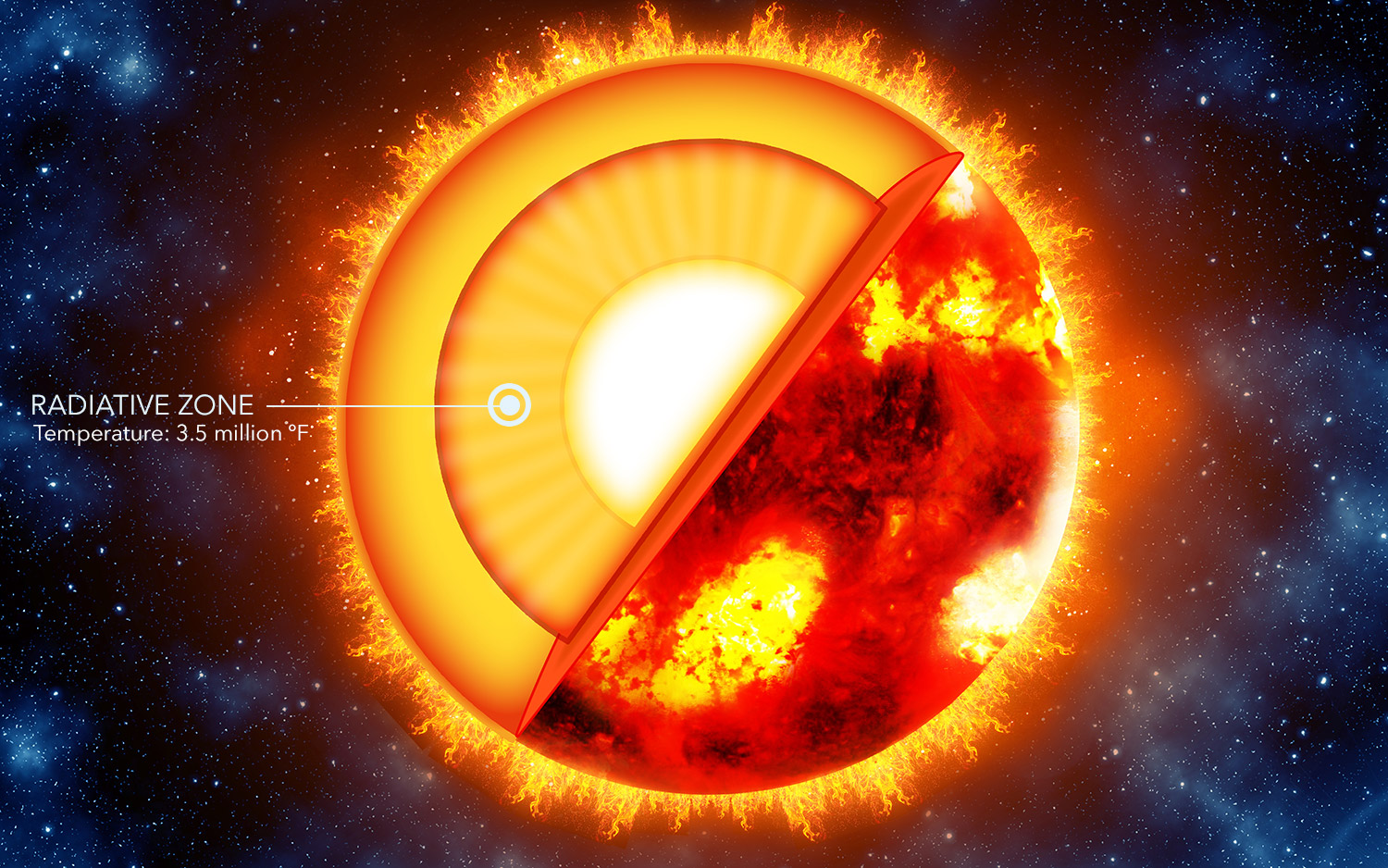
After a photon leaves the sun's core, it moves outward to begin its long journey. According to NASA, any individual photon takes more than 100,000 years to travel from the core to the outer border of the radiative zone, because it bounces up and down rather than moving in a straight line. [Read more about the radiative zone]
NEXT: The Convection Zone
Convection Zone
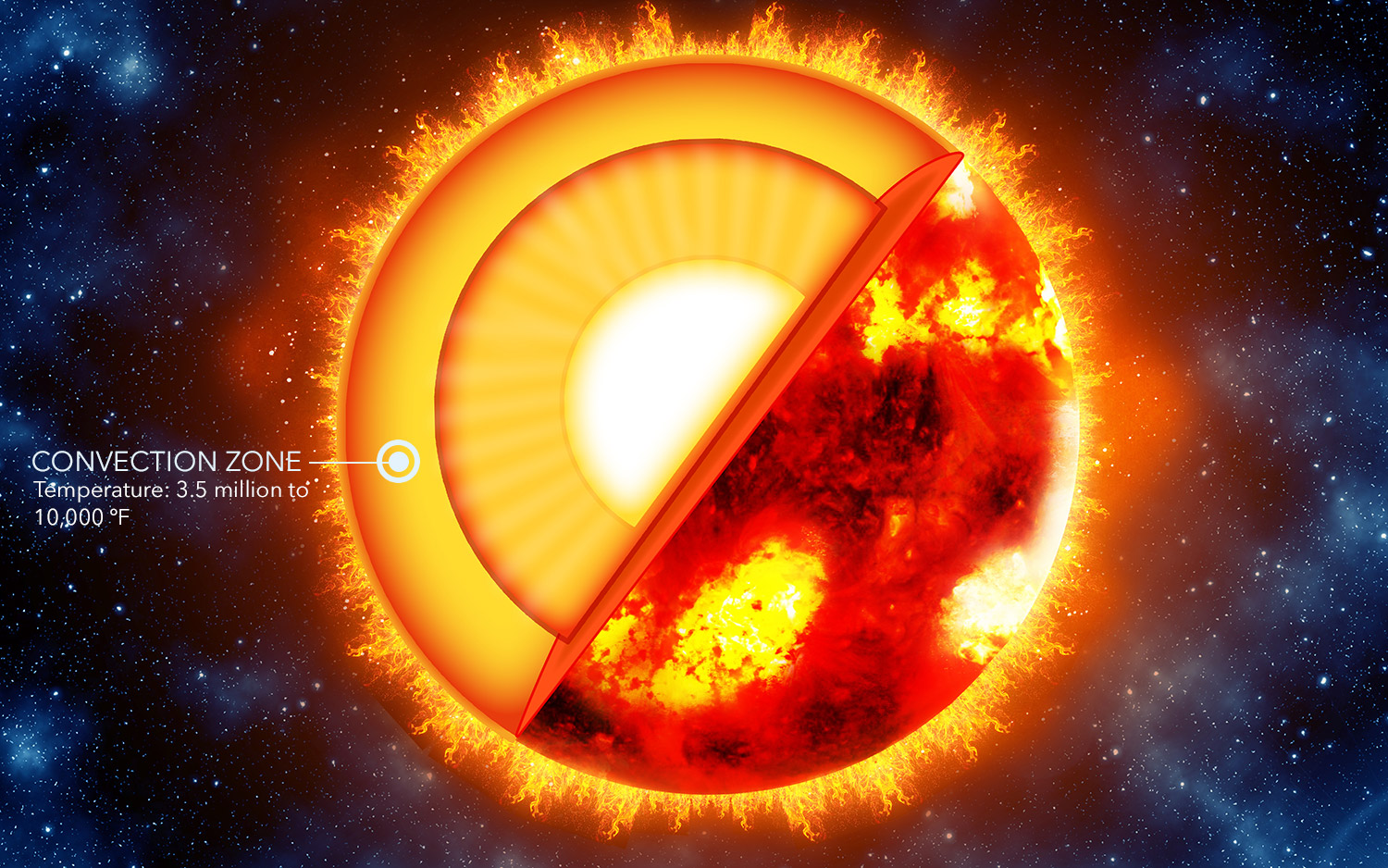
The convection zone starts where the sun's density weakens, continuing the heat transfer begun deeper in the sun. According to NASA, photons pick up speed in this region and large bubbles of hot plasma quickly rise through the convection zone. [Read more about the convection zone]
NEXT: The Photosphere
Photosphere
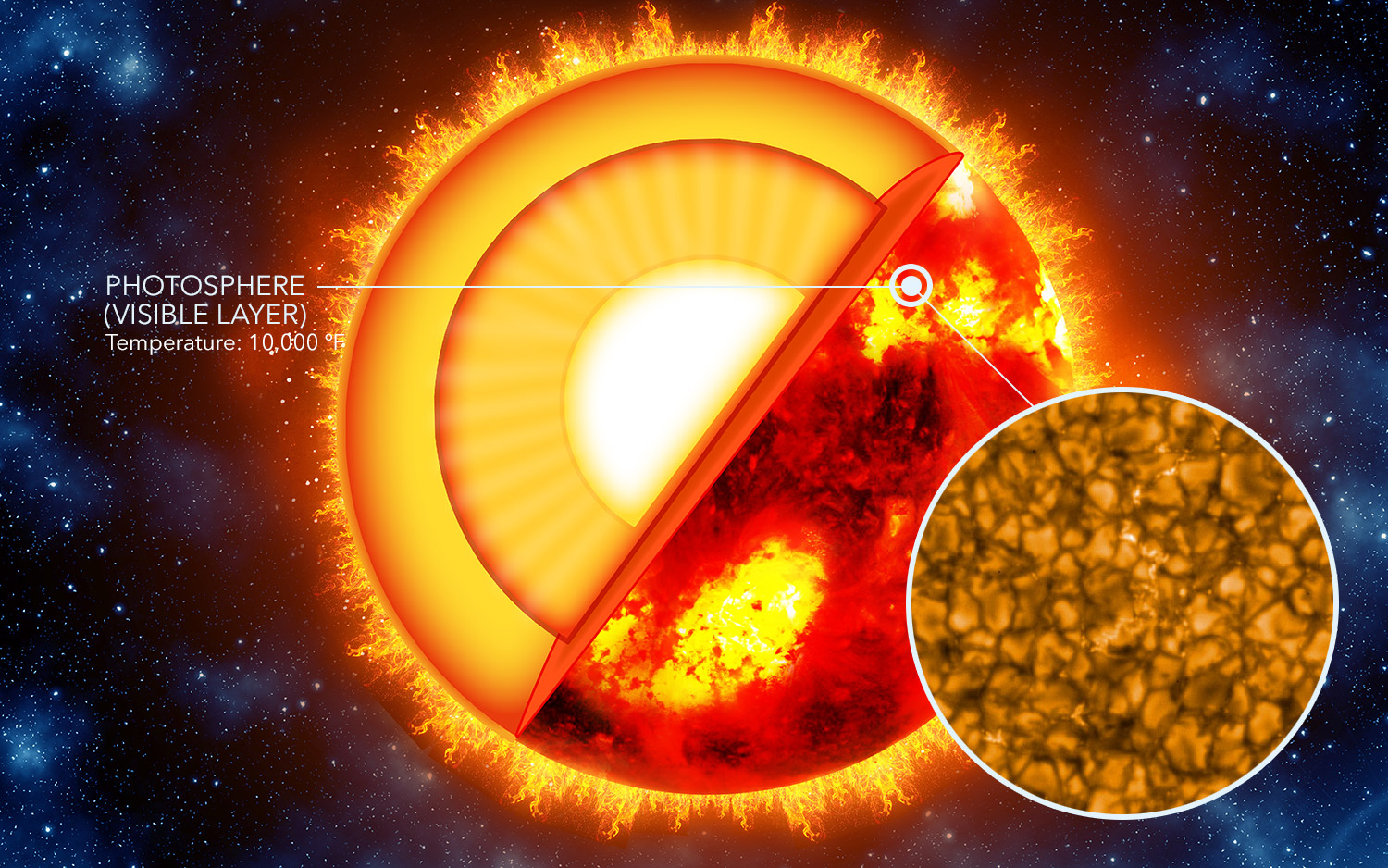
The photosphere is the outermost visible layer of the sun, what we think of as the star's surface. This is where sunspots form and where the light that eventually reaches us on Earth comes from. Here, temperatures are relatively temperate, at about 10,000 degrees F (5,500 C) [Read more about the photosphere's sunspots]
NEXT: The Chromosphere
Chromosphere
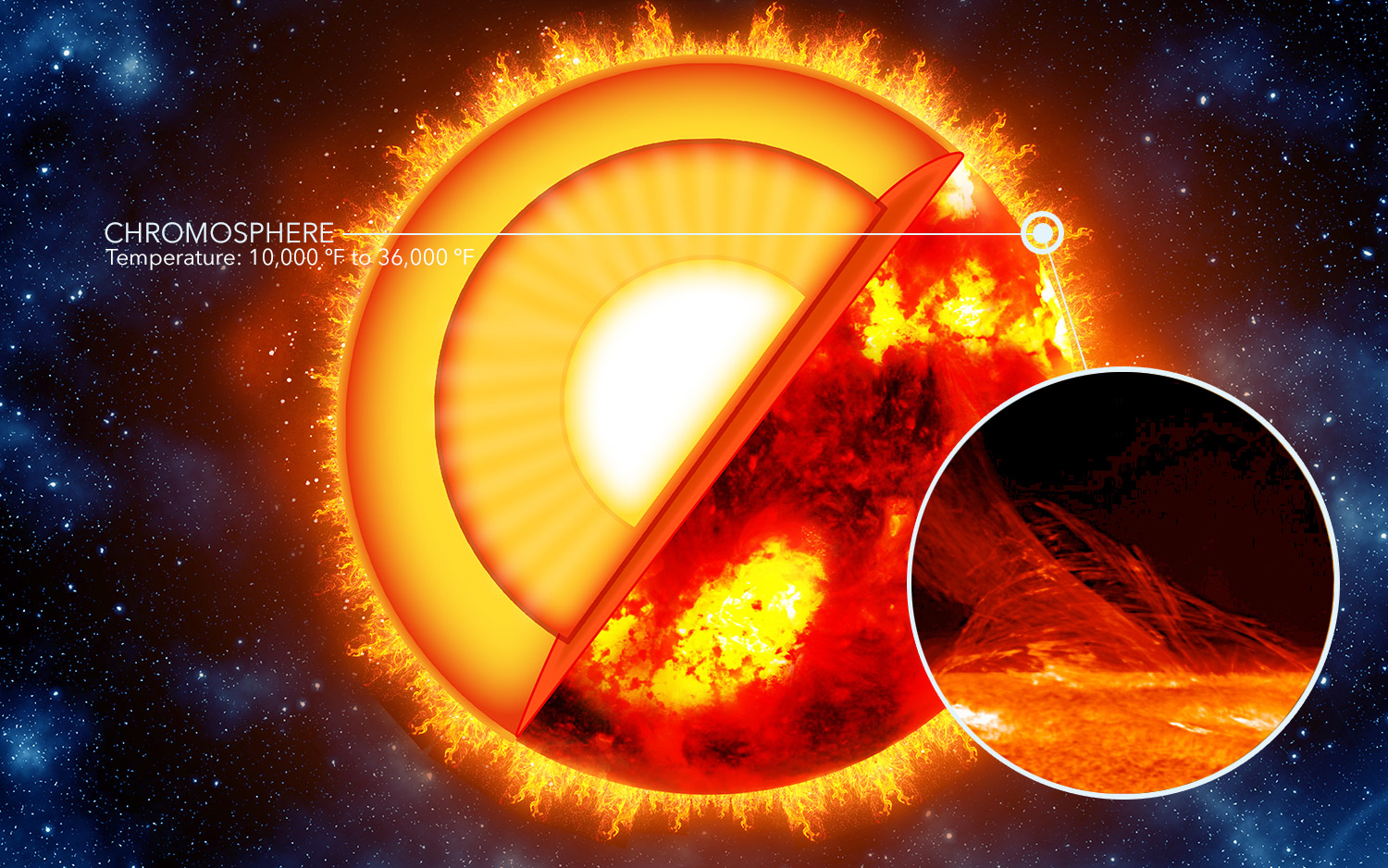
The chromosphere is usually incredibly difficult to see, because it just leaves a reddish glow around the sun. But scientists think this unprepossessing layer may be crucial to conducting heat out of the sun and into the star's incredibly hot upper atmosphere. [Read more about the chromosphere]
NEXT: The Corona
Corona
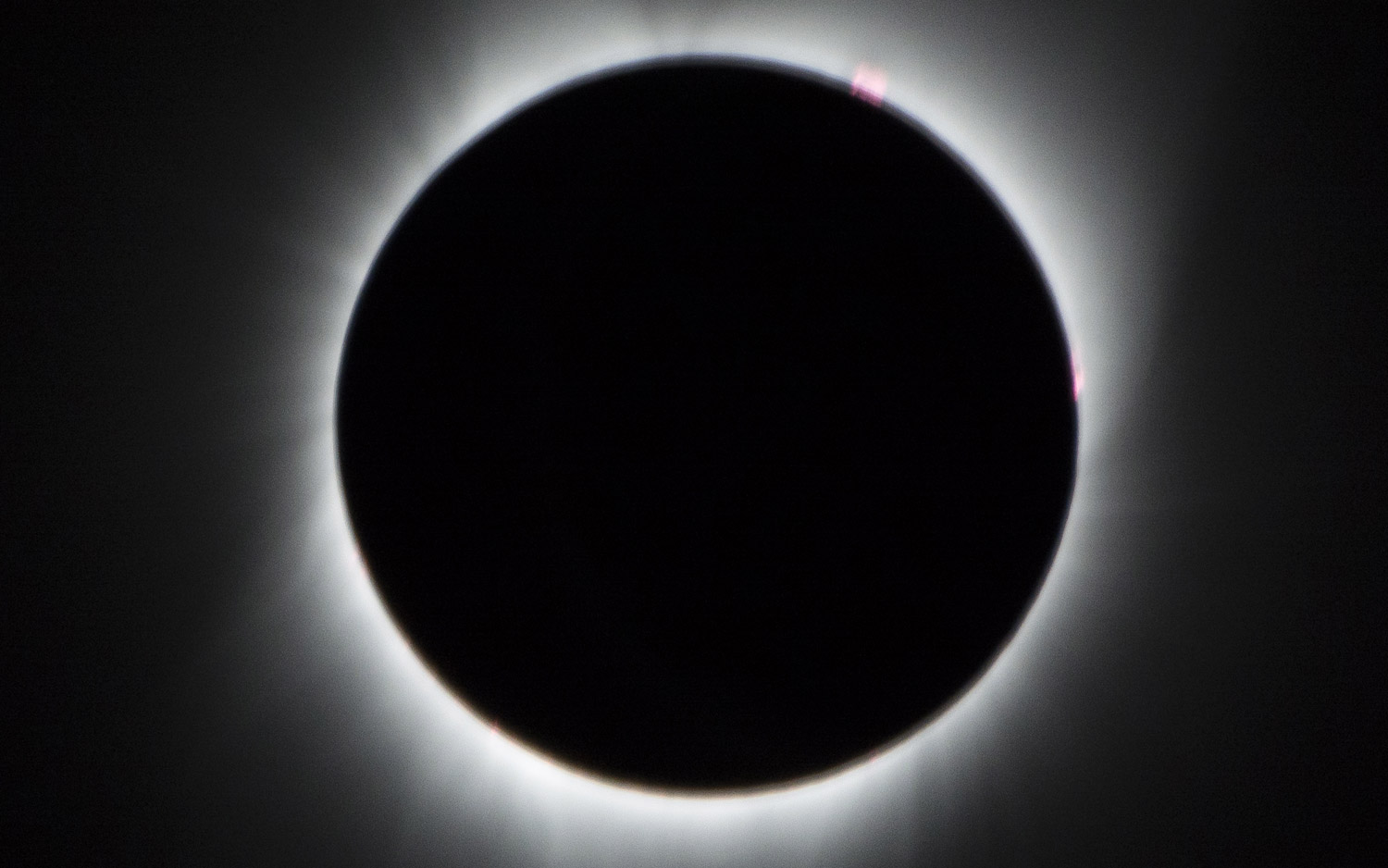
The corona is the barely there outermost layer of the sun, which we can see only during a total solar eclipse, when the moon blocks out the brightness of the star's photosphere. That's made the corona remarkably difficult to study — but beginning later this year, NASA will fly a spacecraft directly though the corona to try to solve its lingering mysteries. [Read more about the corona]
NEXT: The Solar Wind!
Solar Wind

The solar wind isn't technically a layer of the sun, but the constant stream of highly charged particles flowing off the sun is one of the key ways our star affects planets. Here on Earth, our atmosphere mostly blankets us from the solar wind, but it's a key hazard for satellites and space travel. The solar wind also defines our solar system, which stretches as far as the wind does. [Read more about the solar wind]
Join our Space Forums to keep talking space on the latest missions, night sky and more! And if you have a news tip, correction or comment, let us know at: community@space.com.
Get the Space.com Newsletter
Breaking space news, the latest updates on rocket launches, skywatching events and more!

Meghan is a senior writer at Space.com and has more than five years' experience as a science journalist based in New York City. She joined Space.com in July 2018, with previous writing published in outlets including Newsweek and Audubon. Meghan earned an MA in science journalism from New York University and a BA in classics from Georgetown University, and in her free time she enjoys reading and visiting museums. Follow her on Twitter at @meghanbartels.
